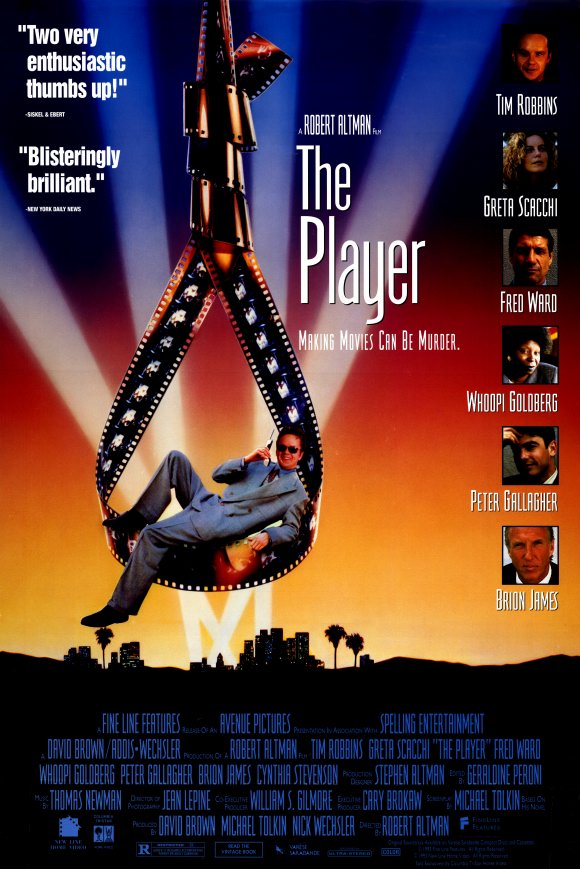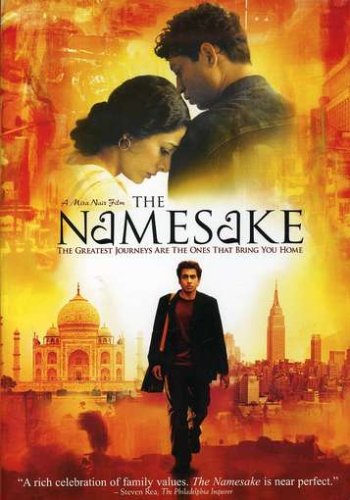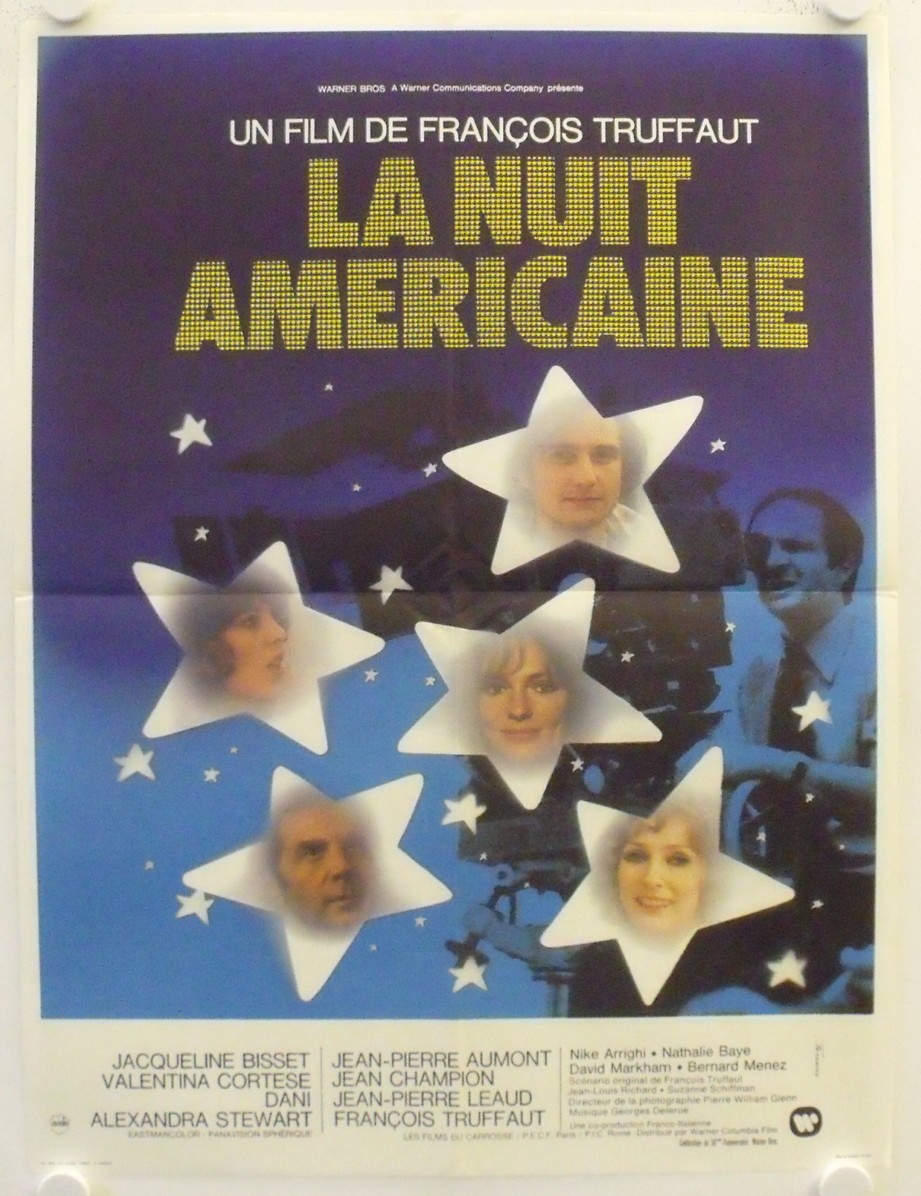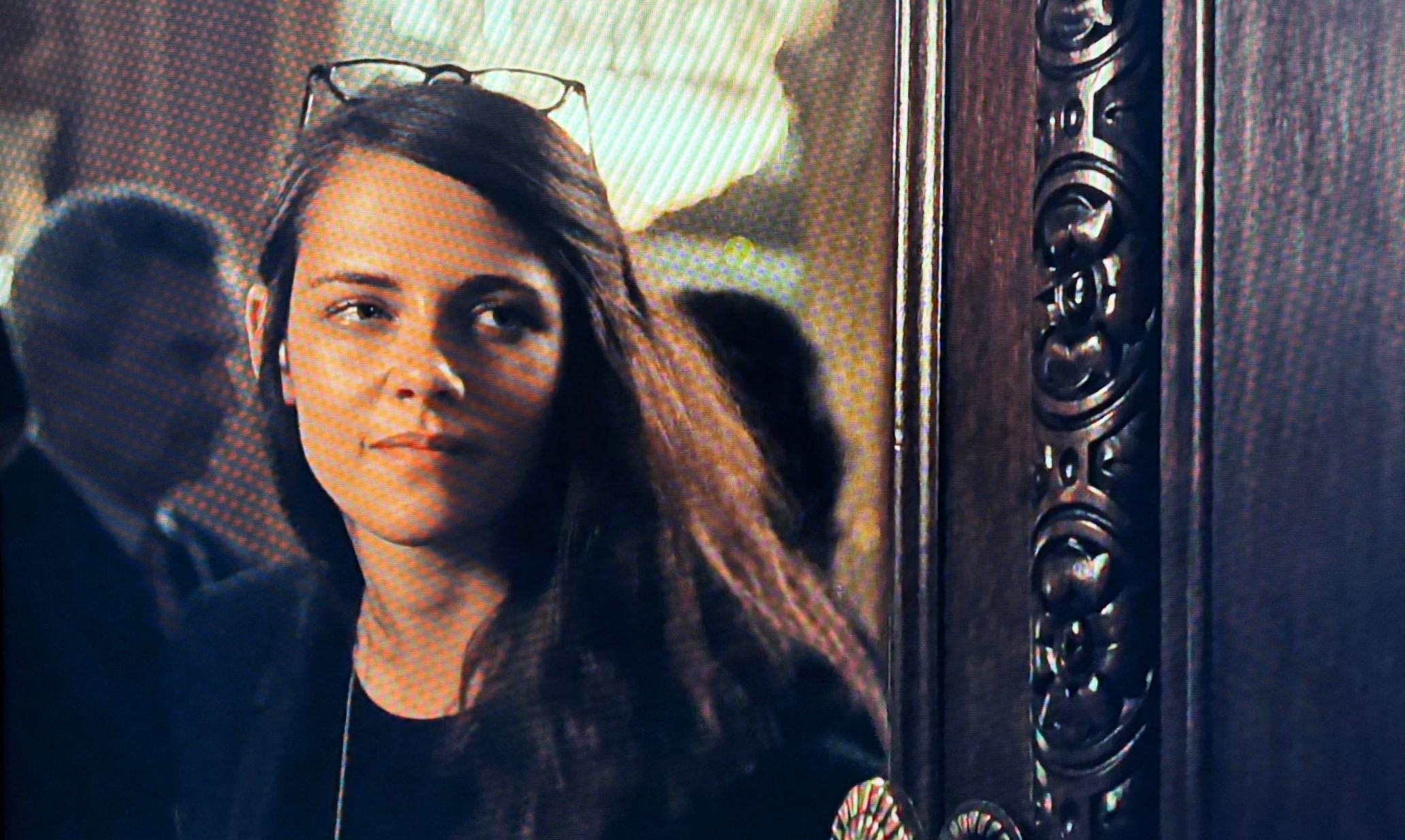Hair apparent: In ‘Clouds of Sils Maria,’ Maria is hanging on to someone else’s movie
Remakes are a bad idea. “Clouds of Sils Maria” is all about one. But “Clouds” is not bad. It’s one of the most beautiful professional relationships ever put to film. And like its cousins “Day for Night,” “The Player” and “Lost in Translation,” it’s the underbelly, and adrenaline, of the movie business.
Acclaimed director Olivier Assayas takes a major gamble — virtually all of the drama in the film occurred offscreen and is revealed to viewers only in hotel-room (or train car) conversations. (It’s also, basically, in English, an artistic gamble.) For visuals, he relies on the splendor of Switzerland; at times, even this ambitious film feels like it's going to encounter the singing Von Trapp kids.
Even for the most elite actors, carrying a two-hour feature film by telling stories is a big ask. Assayas and his superstars, Juliette Binoche, Kristen Stewart and Chloë Grace Moretz, pull it off because much of what they’re revealing feels like the real thing. Sometimes an in-joke.
Stewart, in a supporting role of Val (full name, curiously, Valentine), is this film’s star. Once she exits, it’s like a car that runs out of gas and is being pushed home, albeit downhill. Stewart revealed in a Q&A that she was initially offered the role of Moretz’s Jo-Ann. Of the three, Stewart proved strongest in the awards circuit and won a Cesar, the first American to do so in the supporting actress category. However, Moretz isn’t to be underestimated. She brings at least a little life to the ending scenes. Jo-Ann is one of the more unlikable movie-character actresses ... ever. As she is supposed to be.
Binoche is beyond a superstar and deserves better. The mid-life crisis of her Maria Enders (you may not even remember her name by the end of the movie), in which she is clinging to the notion that “In some way, I am still Sigrid,” a character she played decades earlier, does not seem original — she is initiating a divorce and she laments her changing industry. You would probably expect her to be calling everyone, desperate for a job. But in an impressive departure from that tired approach, she is still highly in demand. Upstart directors corner her at every public appearance. Maria is not wasting screen time wondering if she’s any good any more. She is able to devote her angst to fresher problems — except she doesn’t really have any.
Maria Enders may be concerned about a rivalry with Jo-Ann, but Binoche probably should have been more concerned about Val. Assayas and Binoche have spoken about creating the movie together. Sometimes, best-laid plans go awry. It sounds like Assayas didn’t need to recruit Binoche in the same way the ultra-serious Klaus Diesterweg recruits Maria. Binoche may have taken the “Clouds” role for any number of reasons. The credits order correctly reflects stature and seniority. But Binoche gets the flat character here; it’s Val who is doing the interesting things.

Actresses will lament — jokingly or not — the importance of hair. Those who don’t believe in it should look up Harry Cohn’s reaction to the cut Orson Welles gave Rita Hayworth for “The Lady from Shanghai.” For Binoche in “Clouds,” it’s only half the movie. It’s understood that actresses’ hairstyles change, maybe within a movie. It happens with Mia Farrow in “Rosemary’s Baby” and Anne Hathaway in “Les Misérables.” Those are different kinds of films than “Clouds,” where the change is startling. First, she’s a dazzling red-carpet figure traveling in exciting circles. Then she’s a rustic recluse. Assayas has the right to dial it down. Why he had to do it here, when he had such a good thing going ...
Binoche and Stewart are doing the equivalent of a movie about a pro golfer and his caddie in which the golfer is played by a real pro golfer — but the caddie is too. This is a superb casting decision. The value of “Clouds” is not in the whole, but the sum of these conversations, particularly from the first part of the film, occasionally in the second. The scenes are daily life for Binoche and Stewart. We see that people in the position of Val are constantly relaying offers and booking reservations, and both Stewart and Binoche enjoy Stewart being on the other end of this job. This element of “Clouds” is almost reality TV; it could easily run an extra hour.
Many films would make the mistake of developing an emotional connection between these two characters. Another mistake would be for Maria to make occasionally obnoxious demands. There are emotions here. Sometimes the environment is charged. But what Maria really relishes is her comfort level with Val. It’s halfway to a therapist-like arrangement; Maria can confide to Val basically anything without risk of disclosure, but Maria never asks Val for therapy. Val is a receptionist, scheduler, advocate, shopper, adviser, listener, enforcer, security. When Maria wants to catch a movie with a pal, Val is a great choice. It’s still two people in a business relationship. The boundary is affirmed, and reaffirmed by the epilogue. Binoche in a 2014 interview mentions having the same assistant for 20 years who is “like a sister.”
The breaking point for Maria and Val is not a scheduling mishap. Exactly what it is, we never know. The age-old debate over whether movies are entertainment or art? We learn that these people’s world is far more interesting in between jobs than while working on them. In the second part, even Val has little to do besides promote the artistry of superhero movies. Her departure leaves Assayas open to criticism. Where did she go? Are we to believe this kind of event has happened previously? If not, it makes us question what we’ve observed in the first three-fourth of the movie. Two people, this entertwined, suddenly no more, at the drop of a hat.
The split maybe could’ve been an artistic high point. It’s not, because Assayas already has put the audience through an exhausting, unfortunate cram. Numerous characters inform us as to details of the new project in question, “Maloja Snake.” Even remembering the title takes effort. It’s the Helena and Sigrid play. And we hear each character explained often, and then what we might know about each character in a remake. (Or was there going to be a sequel? Or will it be both a remake and sequel?)
Maria’s endeavor — playing a different character in a remake of one of her earlier performances — is indeed rare. Michael Caine did it with “Sleuth.” “Sigrid and Helena are one and the same person,” explains the aspirational director of the new production. Absorbing most of these details will be necessary to fully appreciate the line-reading showdown between Maria and Val. Sometimes during that showdown, not unexpectedly, it will be difficult to tell whether they are reading lines.
But that’s not the only viewer treadmill. Often we wonder, Are we talking about a movie or a play? Three characters — Maria’s idol Wilhelm and fellow actors Henryk and Jo-Ann — are rarely shown but occasionally discussed. Or make that, often discussed. Maria surely makes Wilhelm far greater than he would be if we actually saw him. Just as we’re struggling to get to know him, we’re hit with references to other offscreen characters. Only a little bit of information successfully conveys the point — Wilhelm’s a beloved genius, Henryk is a pre-#MeToo letch, Jo-Ann is a spoiled party girl, Chris is an “uber-famous” writer married to a famous artist. (What he sees in Jo-Ann, who knows.) We even have recitations about what TMZ says about these people. We get it.
Rita Hayworth in “The Lady from Shanghai”
A big decision by Assayas is about the language. English might be the choice because this movie is international, spanning borders. English is also almost certainly the best bet for a bigger global box office. Truffaut went with French for “Day for Night,” which no doubt would be a headwind on the U.S. box office. What’s a little odd about “Clouds” is that it, like “Day for Night,” takes places in Europe, but the characters talk and trade jabs as if they might as well be in L.A. Binoche’s English is impeccable, like she came from Ohio.
A requirement of the movie-within-the-movie is that it can’t be better than the actual movie. Otherwise, it negates the purpose. If the Helena and Sigrid story is so strong, why wouldn’t Assayas, Binoche and Stewart do that movie instead. In “Day for Night,” the movie-within-the-movie is regarded as a mediocre project, just another month at the office with hazards around every corner, while the real movie — about how filmmaking pushes all these people’s buttons — flourishes.
“Clouds” tries to tell us that maybe every actor has that “defining” work, for audiences and the actor her/himself. Do they? Actors may indeed cherish their projects as much as audiences do. The profession is also a demanding rat race, endless competition for work, constantly moving on to the next paying gig. Maria insists at one point that for her, playing Sigrid was “more than a role.” It’s a difficult prospect for Assayas to convince us that, alone among her extensive credits, “Maloja Snake” is the one project of identity for Maria.
Xan Brooks in the Guardian in 2014 writes, “Val, we come to realise, is the real Sigrid in this movie.” That seems farfetched, given that Val and Maria are not lovers and that Val spends the second part of the movie being bored, not staging a business coup. In what way does the “Clouds” plot even match the supposed “Maloja” plot? This is a major misfire for Assayas. If there are strong parallels, they’re way too hard to figure out. Maria is either two characters in the same production, or the same character in two productions.
The tricky part for Stewart is to be like an assistant when reading lines to Binoche, or even when doing the other parts of her job. She’s fantastic, but there are things she can’t control. It’s kind of like asking Adele to play the role of a backup singer. Stewart’s a little bit too good here, awfully assertive for a personal assistant. Despite her clothing and laid-back appearance, one thing Assayas can’t always obscure is that Stewart is a movie star. Not the same look as Binoche but equally powerful. In many scenes, Stewart inadvertently owns the camera. It’s her movie. Assayas should’ve recognized this before things got too far along, cast a lesser-known star as Maria, asked Binoche to join his next project, and turned over the Epilogue to Val.
Human beings employing personal help is a sensitive topic. In the modern world, one line in the sand has historically been making coffee. That’s a touchy subject in “Working Girl.” At no point does Val ever seem “subservient” to Maria. Val’s job in fact seems almost as good as Maria’s — travel the world for free, interact with big shots, meet celebrities, go to VIP-only events. Val is never asked to do anything demeaning. But is their relationship by definition patronizing? Val seems to believe, more than viewers might, that it is.
Binoche was around 50 when “Clouds” was released; Stewart was about 24. They may be a generation apart, but both are from a western culture that has (relative to much of the world) embraced women’s empowerment and disdained class distinctions. In the 2007 movie “The Namesake,” a young Indian man from New York is visiting India with his family and refuses to sit in a rickshaw with his mother and sister: “The idea of one human being pulling another is feudal and exploitative, and I don’t want to be part of it.” His mother enjoys the ride.
“Clouds” informs us about life in the stratosphere, but not luxury. Maria is sought out by famous people but is never swarmed for autographs and isn’t shown in mansions. We don’t see her buying expensive clothes or getting elite restaurant treatment. We do see her and Val traveling comfortably, staying in nice hotels, and most importantly, able to retreat to beautiful places of nature. It’s a world of wine glasses and fireplaces. Chanel is a big contributor to “Clouds.” But more than glamour, we get a strong sense of everyday problems and pleasures. A divorce. The passing of a friend. Difficult deadlines. Having to work with people we don’t really want to work with. (Maria notably is not dealing with any children, parents or in-laws.) Relaxing in front of a TV. Drinking at a bar. Watching a movie.
There are several implications in “Clouds” that technology and the internet are rapidly changing the centuries-old business of drama. In the first part of the film, life is conducted on the phone. If you’re having trouble getting a connection, it’s like you can’t breathe. People in Binoche’s position no longer read magazines to learn about colleagues; they click on TMZ and watch videos. Early on, Val and Maria discuss apparently wrong information that’s been posted about Maria on her IMDB page. It doesn’t seem like a big problem to change it. Maria purports to disdain anything to do with a computer, including movies made with them, but in a couple passages, we learn that even she took a job as a villain in a superhero movie, a sellout, perhaps.
It seems the most alarming revelation to Maria is not anything about Helena but the fact Maria is suddenly old enough to play that character. Mick LaSalle notes that “Binoche is 51 and looks about 50, albeit a great 50, but Maria is supposed to be 40. This seems a wrong note ...” Brooks describes “Clouds” as “ ‘All About Eve’ without the bite, and Bergman’s ‘Persona’ without the anguish.”
Nobody in “Clouds” ever advises Maria that, regardless of the impact of the original “Maloja Snake,” trying to redo it much later may be far more about paychecks than pushing the boundaries of art. Then again, Charlton Heston’s “Ben-Hur” was a remake. They’re not all bad.
3 stars
(April 2025)
“Clouds of Sils Maria” (2014)
Starring
Juliette Binoche as
Maria Enders ♦
Kristen Stewart as
Valentine ♦
Chloë Grace Moretz as
Jo-Ann Ellis ♦
Lars Eidinger as
Klaus Diesterweg ♦
Johnny Flynn as
Christopher Giles ♦
Angela Winkler as
Rosa Melchior ♦
Hanns Zischler as
Henryk Wald ♦
Nora von Waldstätten as
Actress in Sci-fi Movie ♦
Brady Corbet as
Piers Roaldson ♦
Aljoscha Stadelmann as
Urs Kobler ♦
Claire Tran as
Maria’s London Assistant ♦
Stuart Manashil as
Maria’s Agent ♦
Peter Farkas as
Journalist in Zürich ♦
Ben Posener as
Journalist in London ♦
Ricardia Bramley as
Talk Show Host ♦
Luise Berndt as
Nelly, Urs’ assistant ♦
Gilles Tschudi as
Mayor of Zürich ♦
Benoit Peverelli as
Berndt ♦
Caroline De Maigret as
Chanel PR ♦
Arnold Gramara as
Waldhaus Hotel Concierge ♦
Sean McDonagh as
London Theater Assistant ♦
Valery Bukreev as
Wilhelm Melchior (photo) ♦
Katrin Schmidt as
Dorothea von Duisburg (photo)
Directed by: Olivier Assayas
Written by: Olivier Assayas
Producer: Charles Gillibert
Co-producer: Karl Baumgartner
Co-producer: Thanassis Karathanos
Co-producer: Jean-Louis Porchet
Co-producer: Gérard Ruey
Co-producer: Sylvie Barthet
Associate producer: Antoun Sehnaoui
Co-producer: Olivier Père
Line producer: Germany: Martin Hampel
Line producer: Italy: Maja Wieser Benedetti
Cinematography: Yorick Le Saux
Editor: Marion Monnier
Casting: Anja Dihrberg, Antoinette Boulat
Production design: François-Renaud Labarthe
Art direction: Gabriella Ausonio
Set decoration: Gabriele Wolff
Costumes: Jurgen Doering
Makeup and hair: Morgane Bernhard, Frédérique Ney, Andrew Ketteridge, Céline Planchenault, Gabriele Kent-Horspool, Annett Schulze, Najat Zinbi
Post-production manager: Cendrine Gady
Production manager: Maja Weiser Benedetti
Production manager: Nathalie Dennes
Production manager: Marc Wächter
Unit manager: Ingo Schlösser
Unit manager: Switzerland: Gian-Andrea Albin
Assistant production manager: Sabrina Urbanska
Stunts: René Lay, Jana Reinhardt, Alister Mazzotti, Anja Sauermann



